Last updated on 2025-10-26
A review and sample photos using the Super Wide Heliar 15mm F4.5 II with the LEICA M8.2, EPSON R-D1xG, and LUMIX GF1.
- Please see the disclaimer regarding advertising here.
- Italicized links in the text are advertisement links that take you to other sites.
Table of contents
Gallery
The following cameras were used to take the example photographs:
- LEICA M8.2
- EPSON R-D1xG
- Panasonic LUMIX GF1
- Click on the image to enlarge
Review
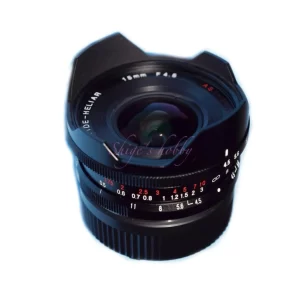
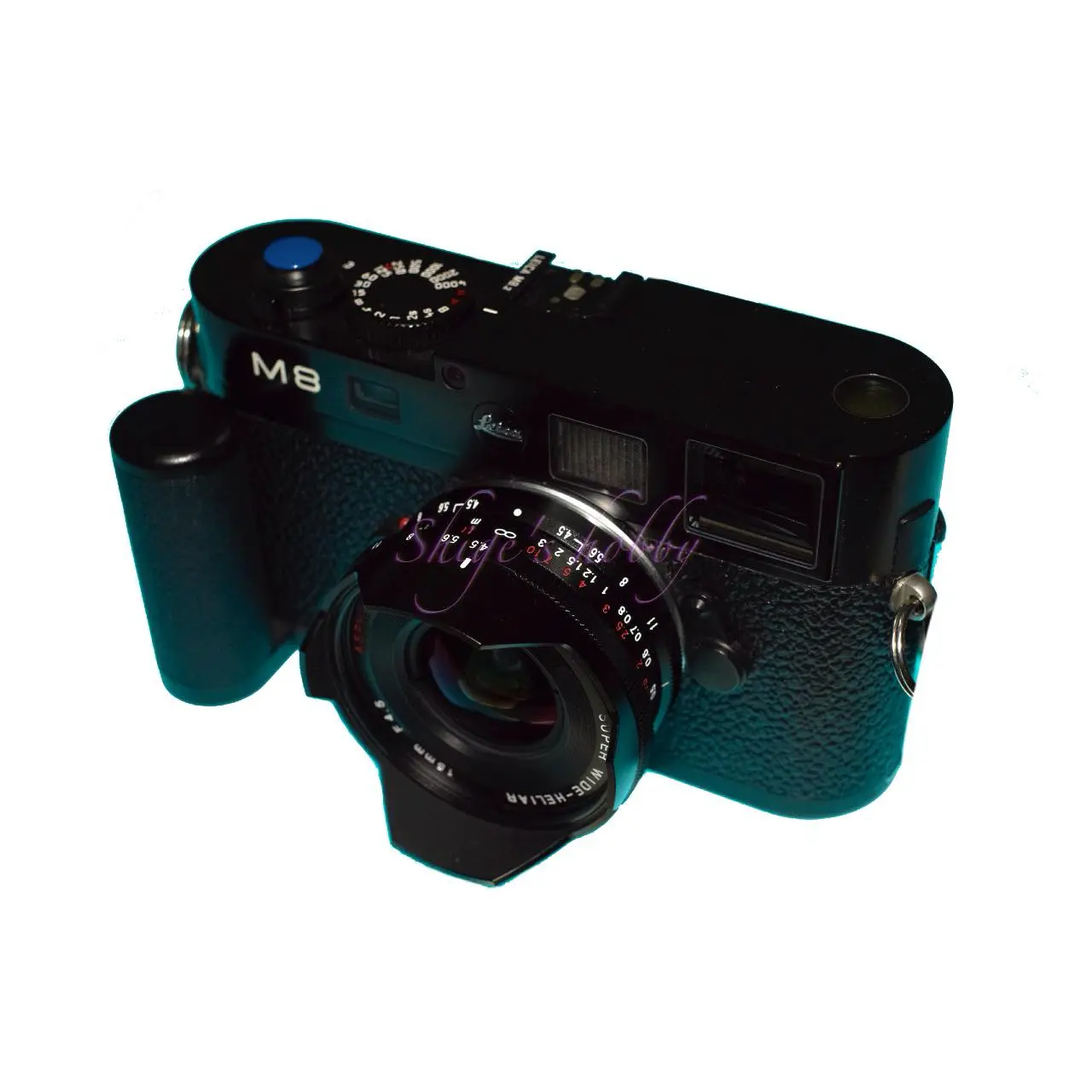
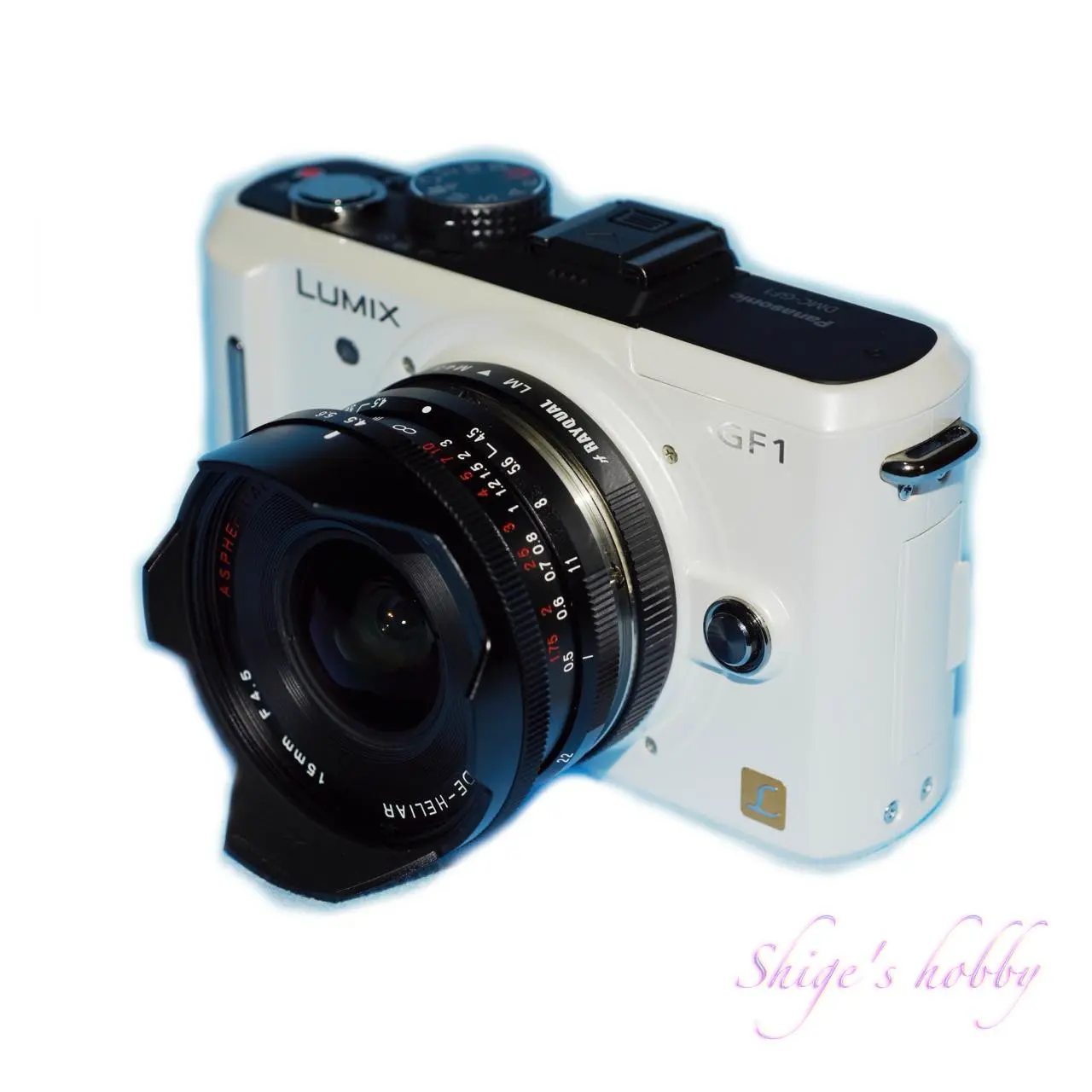
1.Overview
The Voigtlander SUPER WIDE HELIAR 15mm F4.5 II VM is an ultra-wide-angle lens with a focal length of 15mm.
The main specifications are as follows, and details are listed in the specifications.
- The lens consists of 6 groups and 8 elements.
- The minimum shooting distance is 0.5m.
- The lens mount is a Leica M-compatible VM mount.
- It works with the rangefinder of a rangefinder camera up to 0.7m.
- The filter diameter is 52mm and screws into the front of the lens.
2.Usability
The Voigtlander SUPER WIDE HELIAR 15mm F4.5 II VM has the same image quality as the L39 mount version of the Voigtlander SUPER WIDE HELIAR 15mm F4.5, except that the minimum shooting distance is limited to 0.5m and a 52mm filter can be attached to the front. The lens configuration is retrofocus type, so there is little vignetting, and on cameras with sensors smaller than 35mm full-frame (full-size) sensors, the edges where some distortion can be seen are cut out, resulting in a more refined image.
Because the focal length is 15mm and wide-angle, care must be taken when using filters with thick filter frames, as vignetting will occur in the captured image.
The 35mm equivalent focal lengths for sensors other than 35mm full-size sensors are as follows:
- LEICA M8.2 (x1.33 APS-H size sensor) = 20mm
- EPSON R-D1xG (x1.5 APS-C size sensor) = 22.5mm
- LUMIX GF1 (Micro Four Thirds sensor) = 30mm
The Micro Four Thirds sensor is 30mm, so it can be handled in the same way as a normal 28mm wide-angle lens.
As mentioned above, the focal length of the LEICA M8.2 is 20mm, so I used a CARL ZEISS 21mm external viewfinder to check the composition. The peripheral areas of the image are cropped, so there is no color cast in the peripheral areas like with a 35mm full-frame sensor camera. Since the rangefinder is linked up to 0.7m, I was able to accurately focus from infinity to 0.7m. With the addition of this rangefinder linkage mechanism, the minimum physical shooting distance of the lens is limited to 0.5m.
As mentioned above, the focal length of the EPSON R-D1xG is 22.5mm, so I used a LEICA 24mm external viewfinder to check the composition. Other than that, it is the same as the LEICA M8.2. When used with a camera with a larger sensor than an APS-C size sensor, you can really feel the wide shooting range.
Since the Panasonic LUMIX GF1 is a mirrorless camera, the composition can be confirmed on the rear LCD screen, so an external viewfinder is not used. As mentioned above, the focal length is 30mm, so it is not as ultra-wide-angle as a normal 28mm wide-angle lens.
All of the examples are taken at full aperture, but perhaps because the lens is a little darker at F4.5, the image is well resolved across the entire surface. The GF1 allows cropping from 4:3, so there are also results taken at 1:1. This is the result of trimming the edges quite a bit, so there is no dissatisfaction with the image quality. Looking at the 16:9 image that uses the entire width, you can see that the edges are also sufficient for use with Micro Four Thirds.
The second generation 15mm introduced here has a minimum shooting distance of 0.5m, so when used with a mirrorless camera, the first generation 15mm L39 screw mount version has a minimum shooting distance of 0.3m, making it very convenient.
3.Summary
In conclusion, to sum up the Voigtlander SUPER WIDE HELIAR 15mm F4.5 II VM, it is an ultra-wide-angle lens that is compatible with 52mm filters, has a VM mount, and has a minimum shooting distance of 0.5m.
If you find value in the filter attachment and VM mount, this is a lens worth choosing.
Specifications, considerations, etc.
The first 15mm was an L39 screw mount, but the second generation was changed to an M-mount compatible VM mount, and three generations have been released.
The lens configuration of the third generation has changed significantly from the first to the second generation, and the lens has become larger. This lens configuration was then used to release the Sony E mount and Nikon Z mount versions for mirrorless cameras.
The mirrorless camera mount version has a shorter minimum focusing distance and electronic contacts have been added to transmit lens information to the camera, making it suitable for digital cameras.
The VM mount version, which has no electronic contacts, is positioned as a general-purpose lens, and is intended to be used via a mount adapter for minor mirrorless cameras that are not expected to sell well enough to warrant a dedicated mount.
- The lens construction diagrams are taken from materials distributed by each company, and the sizes have been adjusted by us, so they are not exact.
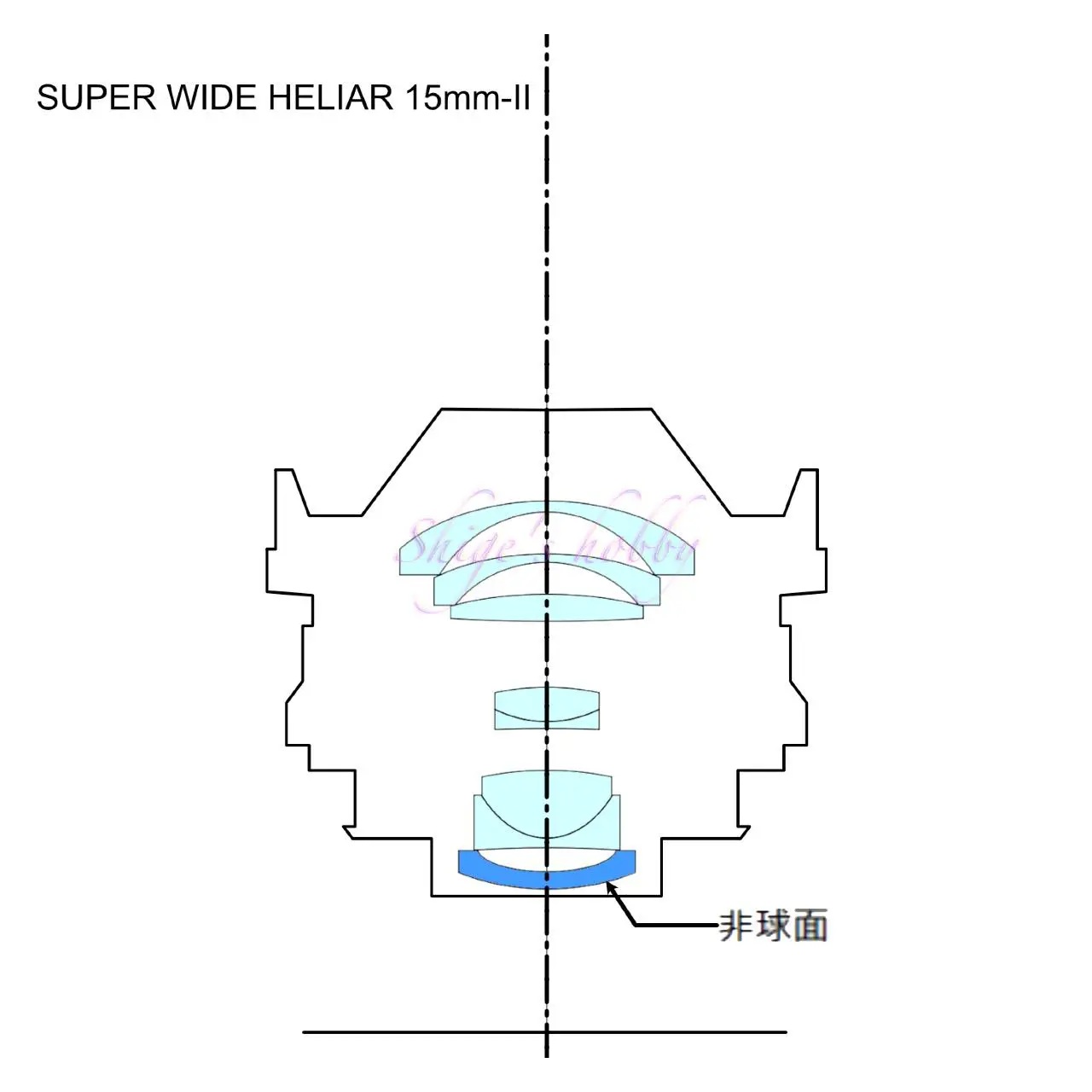
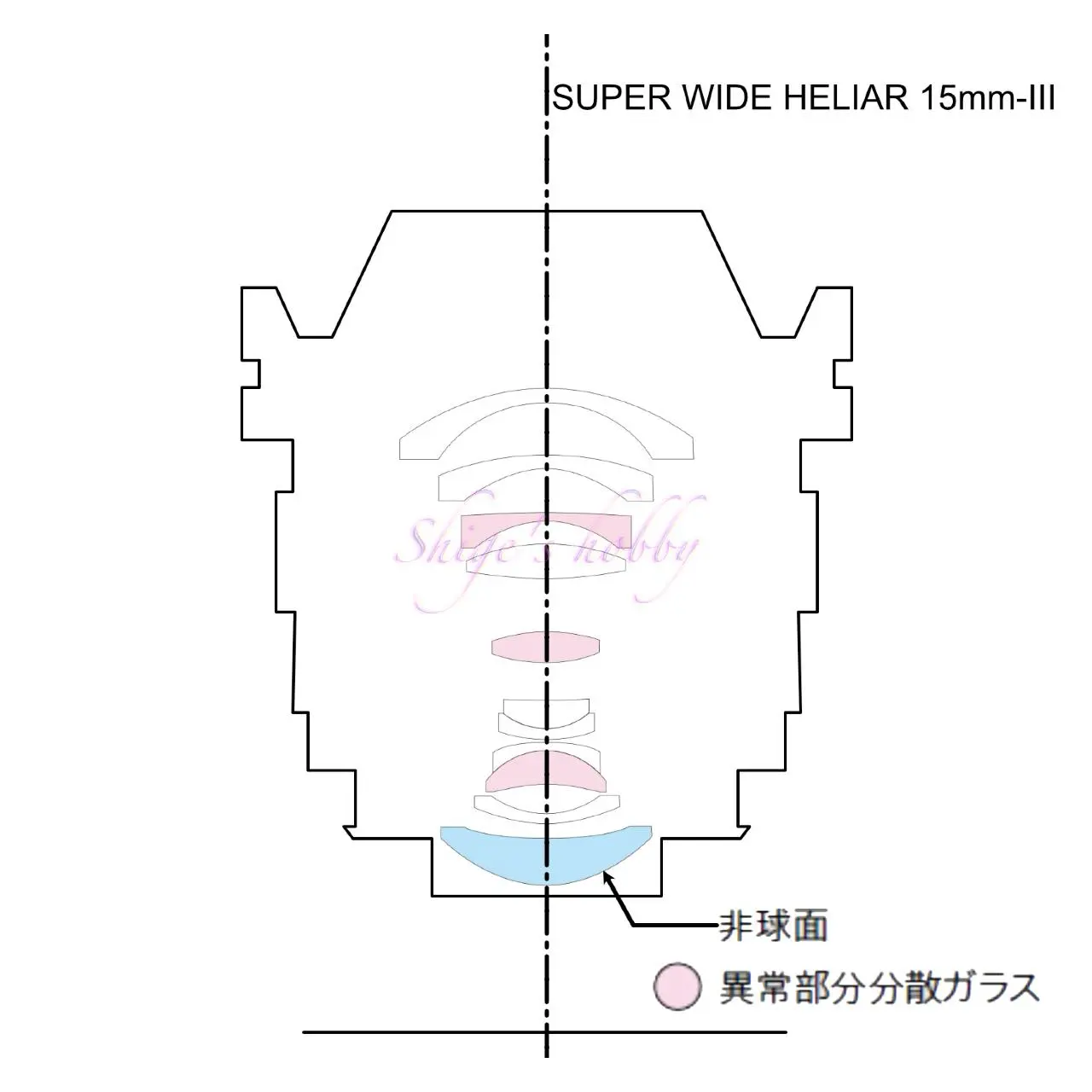
| Item | 2nd | 3rd |
| focal length(mm) | 15 | 15 |
| Maximum aperture | 4.5 | 4.5 |
| Minimum aperture | 22 | 22 |
| Leaf blade | 10 | 10 |
| Lens configuration | 8elements in 6 groups,1 aspherical lens | 11elements in 9 groups |
| Minimum distance(m) | 0.5 | 0.5 |
| Lens length(mm) | VM | VM |
| Lens max diameter(mm) | 38.2 | 55.2 |
| Filter type | 59.4 | 64.8 |
| Weight(g) | 52 | 58 |
| Hood | Lens built-in | Lens built-in |
| Lens mount | 156 | 247 |
| Release date | 2009.4 | 2015.3.19 |
| Price | 65,000 | 95,000 |
Reference links
- COSINA Product PDF(Super Wide-Heliar 15mm f/4.5 Aspherical)
- COSINA Product PDF(Voigtlander Super Wide-Heliar 15mm f/4.5 Aspherical II)
- Super Wide-Heliar 15mm f/4.5 Aspherical(WebArchive)
- Voigtlander Super Wide-Heliar 15mm f/4.5 Aspherical II(WebArchive)
- Voigtlander Super Wide-Heliar 15mm f/4.5 Aspherical III VM-Mount
- Voigtlander Super Wide-Heliar 15mm f/4.5 Aspherical III SONY E-Mount
- Voigtlander Super Wide-Heliar 15mm f/4.5 Aspherical NIKON Z-Mount
Affiliate links

- Voigtlander Lens・Ads by Amazon
- Voigtlander Books・Ads by Amazon
- LEICA M8 / M8.2・Ads by Amazon
- 21mm ViewFinder・Ads by Amazon
- 24mm ViewFinder・Ads by Amazon
Update history
- 2025.7.23

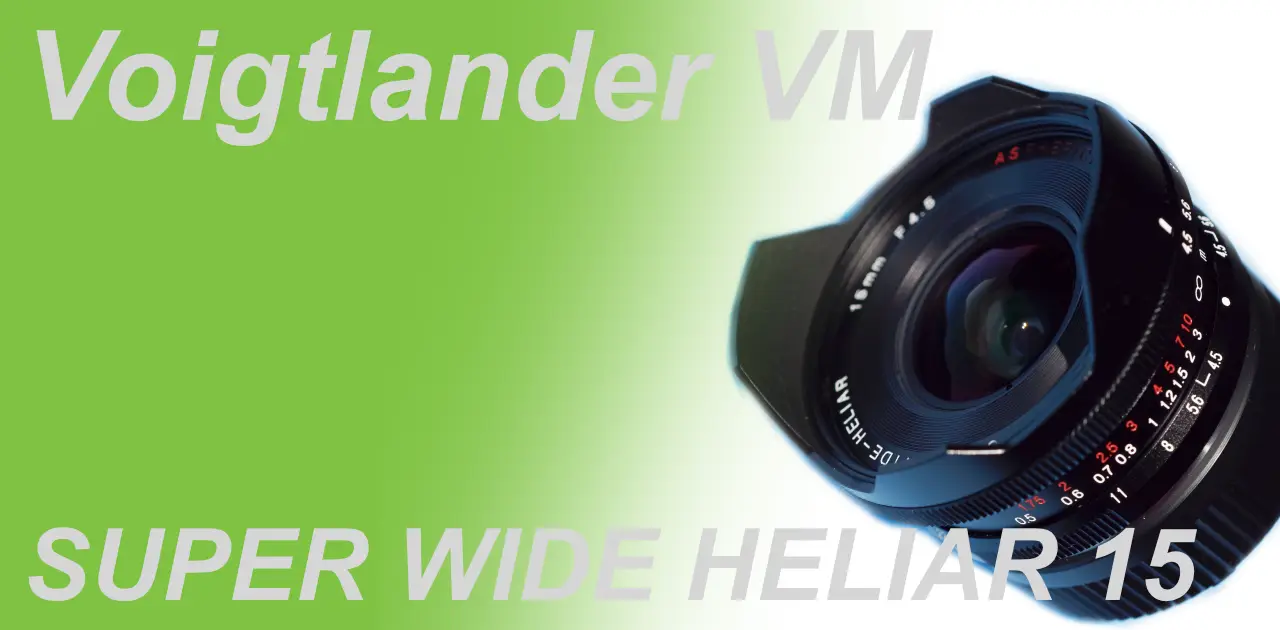

Be First to Comment